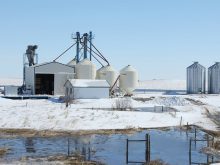LYNNFIELD, N.B. – By his own reckoning, 58-year-old dairy farmer Philip Christie is at the awkward stage in a farmer’s life, planning a farm transition but not yet clear about how it will end.
“Basically, we are in a debt pay down mode to prepare the way for the kids to have room to make their decisions,” said the southwestern New Brunswick farmer.
“I guess we’re at the awkward stage, but at least we are optimistic that things will work out.”
However, before Christie sat down to talk about the evolving state of his farm, he summoned a visitor to the top of a small hill on his farm in this rugged and lightly populated southwestern corner of the province.
Read Also

Communication key to bridging generation gap
Each generation is shaped by the predominant forces at play during their formative years. Acknowledging these influences can improve communication among the generations.
“Come up here and I’ll show you why this is where I’m from.”
The westward view was sweeping and stunning. In the distance was the lush forest of Maine. In the foreground was the tranquil expanse of Canoose Lake.
“Farming is more than cash flow and change in your pocket,” he said.
“Being able to watch the sunrise and the sunset in a place like this is pretty important, too.”
But the cash flow and change-in-the-pocket things do matter to Christie, who moved to this area in 1981 to buy a parcel of land that had 40 cleared acres and no buildings. His father farmed in the area “and that was important because it gave me access to his machinery.”
During the intervening 27 years, a 32-cow barn was built (it now accommodates 38 milking cows) and cleared acreage increased to 120, as well as 40 rented.
Now, 28-year-old daughter Barbara and 26-year-old son David are interested in returning to the farm after acquiring impressive education credentials and work experience.
That’s where the situation becomes awkward.
Christie said the size of the operation, small by New Brunswick standards, could not sustain his children, both of whom are involved in decision-making now but have not yet moved to the full farm commitment.
“My goal is to make it so that debt is down to the point where the kids can make a decision on whether they want to build a new barn that would basically allow doubling the size of the operation because that is what I think would be required,” he said.
In the meantime, Christie is trying to prepare the way for the transition by investing in equipment and on-farm storage facilities, including significant spending last year.
“We’ve been going through the process of getting everything up to a good standard,” he said.
“That will give the kids more options for what they need to decide.”
Meanwhile, the next generation will face challenges both operational and political that go beyond whether to invest in quota and a new barn to double the size of the operation.
Christie said the decline in the province’s forestry industry is causing an unexpected problem for New Brunswick dairy farms.
“One of the challenges here right now is finding and affording bedding,” he said.
“We used to use sawdust from the mills, but most of those mills have closed down in the past few years so we are scrambling. It is another headache.”
And as a dairy industry politician who sits on the board of Dairy Farmers of New Brunswick, he worries that unco-ordinated policies in different provinces will undermine the ability of the dairy industry to remain competitive as it faces the likelihood of increased imports if a World Trade Organization deal is signed.
“It is becoming more widely understood that our producers have to work together more inter-provincially if our industry is going to evolve and remain competitive,” he said.
“We have to be prepared and most of the time, boards don’t understand the damage they do to the national industry with the decisions they take, whether they mean to do damage or not. I’m confident no matter what happens in Geneva that we can keep supply management but we have to remain competitive too.”














